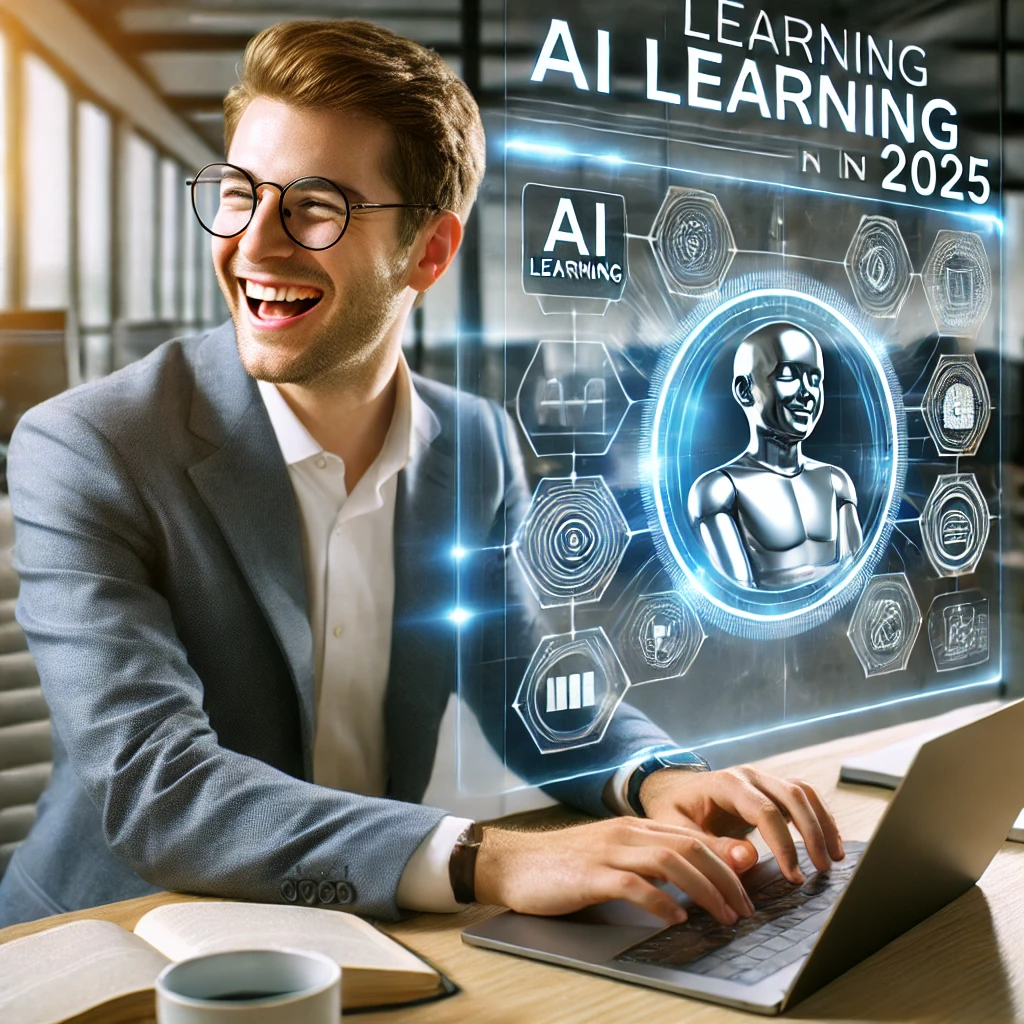How I’d Learn AI in 2025: A Complete 90-Day Blueprint for Beginners
Artificial Intelligence mastery in 2025 has become more accessible than ever before, transforming from a complex coding endeavor into a practical skill that anyone can acquire within 90 days. The landscape of AI learning has shifted dramatically, creating unprecedented opportunities for beginners to become experts without spending years in traditional education or thousands on unnecessary courses. This transformation has democratized AI technology, making it possible for individuals from diverse backgrounds to harness its power and create impactful solutions that were once the exclusive domain of specialized developers and data scientists.
We strongly recommend that you check out our guide on how to take advantage of AI in today’s passive income economy.
Table of Contents
The Three Major Shifts in AI Learning
The technological revolution of 2025 has brought forth three groundbreaking changes that have completely revolutionized how we approach AI learning. The emergence of no-code AI tools has demolished the traditional barriers to entry, enabling anyone to create sophisticated AI solutions without extensive programming knowledge. These intuitive platforms have transformed what once required months of coding into tasks that can be accomplished in minutes. The democratization of AI development has led to an explosion of creativity, with individuals from various fields bringing their unique perspectives to solve complex problems using AI tools.
The second major shift involves the evolution of AI capabilities from basic chatbots to comprehensive AI employees. These advanced systems can now handle complex tasks 24/7 at a fraction of the cost of human workers. The sophistication of these AI employees extends far beyond simple automation – they can understand context, make nuanced decisions, and adapt to changing situations. This advancement has created a new category of digital workforce that can handle everything from customer service to complex data analysis, opening up new possibilities for businesses of all sizes to scale their operations efficiently.
Integration stands as the third and most significant transformation in the AI landscape. Major platforms have embedded AI directly into their existing tools, eliminating the need to build solutions from scratch. This integration has created a new paradigm where success depends more on understanding how to connect and customize existing solutions rather than creating everything from the ground up. The seamless incorporation of AI into everyday business tools has made it possible for organizations to enhance their existing workflows without completely overhauling their systems. This evolution has particularly benefited small and medium-sized businesses that previously couldn’t afford custom AI solutions.
The Foundation: Mastering Prompt Engineering
The cornerstone of AI success in 2025 lies in mastering prompt engineering, the art of effectively communicating with AI systems. Think of prompts as the modern equivalent of programming languages, where the difference between basic and advanced prompting can dramatically impact the quality of AI outputs. Understanding the nuances of prompt engineering has become crucial as AI systems become more sophisticated in their ability to interpret and respond to human instructions. The real power lies in crafting prompts that not only achieve immediate goals but also create scalable, reusable frameworks for future applications.
The CRAFT method has emerged as the gold standard for creating effective prompts, representing a systematic approach to AI communication that ensures consistent, high-quality results. Context establishment forms the foundation, requiring a deep understanding of the AI’s capabilities and limitations. Requirements definition follows, where clear objectives and boundaries are set for the AI’s output. The Action phase involves breaking down complex tasks into manageable steps, while Format specification ensures the output aligns with intended use cases. Testing and refinement complete the cycle, creating a feedback loop that continuously improves prompt effectiveness.
Advanced prompt engineering goes beyond simple instruction-giving – it involves understanding the psychological aspects of AI communication. This includes recognizing how different phrasings can affect AI responses, how to structure multi-step instructions for optimal results, and how to create prompts that can adapt to varying contexts. The ability to craft nuanced prompts that account for edge cases and potential misinterpretations has become a valuable skill in the AI ecosystem.
Leveraging AI to Learn AI
The meta-learning approach of using AI to learn AI has revolutionized the educational process in 2025. This self-reinforcing system creates a dynamic learning environment where AI platforms act as both teacher and tool, adapting to individual learning styles and pace. The process begins with AI systems analyzing your current knowledge level and learning objectives, creating personalized roadmaps that optimize the learning journey. These systems can identify knowledge gaps, predict potential stumbling blocks, and adjust the curriculum in real-time based on your progress.
The integration of AI-powered assessment tools has transformed how learning progress is measured and improved. Instead of traditional static tests, AI systems generate dynamic quizzes that adapt to your performance, focusing more attention on areas where you need improvement while quickly moving through concepts you’ve mastered. This adaptive testing approach ensures efficient use of study time and maintains engagement by providing just the right level of challenge.
The practical application component has been enhanced through AI-guided project creation. These systems can generate realistic scenarios and projects that perfectly match your skill level and learning objectives. As you work through these projects, AI mentors provide real-time feedback and suggestions, helping you understand not just what went wrong, but why, and how to improve. This hands-on approach, supported by intelligent guidance, accelerates the learning process and helps build practical skills that are immediately applicable in real-world situations.
Building Your Personal AI Productivity Engine
The journey from theory to practical application begins with a systematic approach to identifying and optimizing daily tasks through AI integration. This process starts with a comprehensive audit of your daily computer activities, creating a detailed map of repetitive tasks, time-consuming processes, and areas where AI can add the most value. This documentation phase is crucial as it helps identify patterns and opportunities that might not be immediately obvious, leading to more effective automation strategies.
The implementation of AI in email management serves as an excellent starting point for building your personal AI productivity system. Modern AI email systems go beyond simple auto-responses – they learn your communication style, understand the context of different business relationships, and can draft responses that perfectly match your tone and intent. These systems can prioritize messages, suggest appropriate response times, and even predict when follow-ups might be necessary, creating a comprehensive email management solution that saves hours of work each week.
Template creation and automation represent the next evolution in personal AI productivity. This involves developing a library of AI-powered solutions for different categories of tasks, each optimized for specific use cases. The key to success lies in the systematic approach to template development – starting with basic templates and gradually adding complexity as you understand what works best for your specific needs. These templates become the building blocks for more sophisticated automation systems that can handle complex workflows with minimal human intervention.
The Power of API Integration
The true potential of AI in 2025 emerges when different tools work together seamlessly through APIs, creating interconnected systems that can handle complex workflows autonomously. These digital connectors function like efficient waiters in a restaurant, taking requests and delivering results across various platforms with precision and reliability. The process begins with understanding API architecture and security, including the crucial role of API keys in maintaining secure connections between different services.
Modern API integration platforms have transformed what was once a complex technical challenge into an accessible process for users of all skill levels. Services like Rapid API have created marketplace environments where hundreds of pre-built APIs can be easily discovered, tested, and implemented. This accessibility has democratized the ability to create sophisticated, integrated AI solutions that can handle everything from data analysis to complex business processes.
The real power of API integration lies in the ability to create custom workflows that perfectly match specific business needs. By connecting different AI services, databases, and business tools, organizations can create automated processes that handle complex tasks without human intervention. These integrated systems can manage everything from customer communication to data analysis, creating efficient workflows that save time and reduce errors.
Creating Profitable AI Solutions
The path to monetization in the AI space requires a strategic approach that focuses on solving real business problems through practical automation solutions. The most successful AI implementations start with a deep understanding of business pain points and develop targeted solutions that deliver measurable value. Customer service automation has emerged as a particularly lucrative opportunity, where AI agents can handle inquiries across multiple channels with response times under 30 seconds.
Modern AI customer service solutions go beyond simple chatbots – they create comprehensive support systems that can understand context, manage complex requests, and maintain consistent brand voice across all interactions. These systems can integrate with existing business tools to access real-time information about orders, inventory, and customer history, providing accurate and helpful responses that enhance customer satisfaction.
The development of AI solutions for business requires a methodical approach to implementation and scaling. This includes thorough testing phases, careful documentation of processes, and continuous refinement based on real-world performance data. Successful AI solutions also incorporate feedback loops that allow the systems to learn and improve over time, creating increasingly effective automation tools that deliver growing value to clients.
Scaling Your AI Business
Success in the AI space requires a systematic approach to documentation and client management that enables sustainable growth. Every solution built should be thoroughly documented, including not just the technical specifications but also the reasoning behind design decisions, potential areas for improvement, and lessons learned during implementation. This comprehensive documentation becomes invaluable when scaling operations, training new team members, or adapting solutions for different use cases.
Client management in the AI business space requires a sophisticated approach that balances automation with personal attention. Implementing modern CRM solutions allows for tracking client interactions, project progress, and business opportunities in a systematic way. Communication platforms like Slack create efficient channels for client interaction, while project management tools ensure smooth delivery of AI solutions. The goal is to create scalable processes that maintain high service quality while allowing the business to grow.
The development of standardized solutions represents a crucial step in scaling an AI business. By identifying common patterns in client requests and developing reusable components, businesses can create efficient delivery processes that reduce implementation time while maintaining quality. These standardized solutions can then be customized for specific client needs, creating a balance between efficiency and personalization that enables profitable scaling.
The 90-Day Action Plan
The journey to AI mastery follows a carefully structured path that maximizes learning efficiency and practical skill development. The first month focuses on building a solid foundation in AI concepts and tools. This includes mastering prompt engineering principles, understanding AI system capabilities, and developing basic automation skills. The emphasis during this period is on hands-on practice with real-world applications, ensuring that theoretical knowledge is immediately put to practical use.
The second month transitions to more advanced concepts and practical implementation. This phase focuses on understanding API integration, developing sophisticated automation solutions, and creating AI agents that can handle complex tasks. The emphasis shifts from individual tools to integrated systems, preparing for real-world business applications. This period also includes extensive practice with different AI platforms and tools, building the technical confidence needed for professional implementation.
The final month concentrates on business development and professional implementation. This includes selecting a specific market niche, developing specialized solutions, and creating systematic approaches to client acquisition and service delivery. The focus during this period is on turning technical skills into profitable business opportunities, including developing marketing strategies, creating service packages, and building efficient delivery systems.
Beyond the Basics: Advanced AI Implementation
The journey into advanced AI implementation requires understanding not just the technical aspects but also the strategic considerations that determine success in real-world applications. This includes developing expertise in AI system architecture, understanding the implications of different implementation choices, and creating solutions that can scale effectively as needs grow.
Security and ethical considerations play a crucial role in advanced AI implementation. This includes understanding data privacy requirements, implementing appropriate security measures, and ensuring that AI solutions operate within ethical boundaries. The ability to create secure, responsible AI solutions has become a key differentiator in the professional AI services market.
The future of AI implementation lies in creating systems that can adapt and evolve with changing business needs. This includes developing flexible architectures that can incorporate new capabilities as they become available, creating systems that can learn from experience, and building solutions that can scale efficiently as demands grow. The key to success in this evolving landscape is maintaining a balance between innovation and reliability, creating solutions that push the boundaries of what’s possible while maintaining the stability required for business operations.

We strongly recommend that you check out our guide on how to take advantage of AI in today’s passive income economy.




